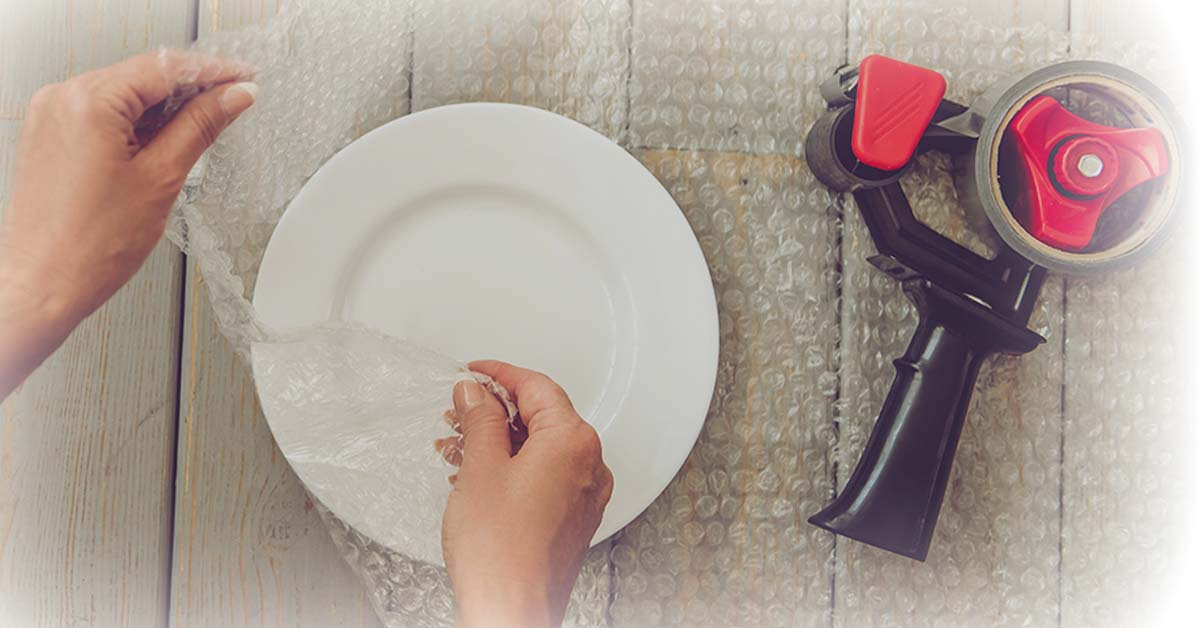Moving can be a daunting task, especially when it comes to packing fragile items such as dishes. Proper packing techniques and materials are crucial to ensure your dishes arrive at your new home in one piece. This article provides a detailed guide on how to pack dishes for a move, along with some useful tips and tricks to protect them during transportation.
Gather Packing Supplies
Before you start packing your dishes, gather the necessary supplies to ensure they are properly protected:
Sturdy Boxes
Choose strong, corrugated cardboard boxes in various sizes. Avoid using boxes that are damaged or have weak spots.
Packing Paper
Use plain packing paper or newsprint to wrap each dish individually.
Bubble Wrap
Have a roll of bubble wrap handy for extra cushioning.
Dish Dividers or Cardboard Inserts
These are specifically designed to separate and protect dishes during transit. Alternatively, you can use pieces of cardboard to create dividers.
Packing Tape
Use high-quality packing tape to secure the boxes.
Sorting & Preparing Dishes
Sort & Declutter
Before packing, go through your dishes and decide which ones you want to keep. Consider donating or selling any items you no longer need or use. This will help reduce the number of dishes you need to pack and unpack.
Prepare the Boxes
Reinforce the bottom of each box with packing tape to ensure it can support the weight of the dishes. Line the bottom of the box with crumpled packing paper for added cushioning.
Packing Techniques
Wrap Each Dish Individually
Start by placing a stack of packing paper on a flat surface. Take one dish and center it on the paper. Fold the corners of the paper over the dish and tuck them inside to create a secure wrapping. Use additional sheets of paper if needed. Repeat this process for each dish.
Add Extra Cushioning
For fragile dishes, wrap them with an additional layer of bubble wrap after wrapping them in packing paper. This will provide extra protection against impacts during the move.
Stacking Dishes
When placing dishes in the box, position them vertically rather than flat. This distributes the weight evenly and reduces the risk of breakage. Place heavier items at the bottom and lighter items on top.
Use Dividers or Cardboard Inserts
If you have dish dividers or cardboard inserts, place them vertically between each dish to provide extra protection and prevent them from shifting during transit. If you don’t have dividers, you can create your own using pieces of cardboard cut to fit the box.
Fill Empty Spaces
Fill any gaps or empty spaces in the box with crumpled packing paper or bubble wrap to prevent the dishes from moving and shifting. This adds an extra layer of cushioning.
Seal the Box Securely
Once the box is filled with dishes, close and seal it with packing tape. Reinforce all the seams and edges to ensure the box remains intact during transportation.
Additional Tips & Tricks
Label the Boxes
Clearly label each box as “Fragile” and indicate that it contains dishes. This will alert movers and help you handle the boxes with care during the move.
Pack in Smaller Boxes
Avoid over packing larger boxes with dishes, as they can become heavy and increase the risk of breakage. Opt for smaller boxes that are easier to handle and distribute the weight evenly.
Use Sturdy Boxes for Heavy Dishes
If you have particularly heavy dishes, such as cast iron cookware, use sturdy and smaller boxes to ensure they can withstand the weight.
Consider Using Dish Barrels
Dish barrels are specifically designed to pack dishes and fragile items. They provide additional protection with their double-walled construction and reinforced corners. If available, consider using dish barrels for an extra layer of protection for your dishes.
Pack Plates Vertically
Stack plates vertically in the box rather than horizontally. This reduces the pressure on individual plates and minimizes the risk of them breaking.
Separate Delicate Items
If you have delicate or valuable dishes, consider wrapping them individually in bubble wrap or packing them in separate boxes. This provides extra protection for those fragile pieces.
Mark the Box as “Top Load Only”
Indicate on the box that it should be loaded on top of other boxes during transportation. This will ensure that heavier items are not placed on top, minimizing the risk of damage.
Pack Bowls & Cups Strategically
Nest bowls inside each other and wrap them collectively to save space. For cups, consider placing them upside down and wrapping them individually to protect the handles.
Use Towels or Linens for Extra Padding
Utilize towels, linens, or cloth napkins as additional padding between dishes. This not only provides cushioning but also maximizes the use of space in your boxes.
Don’t Overpack the Boxes
Avoid overpacking boxes with dishes. Leave some room at the top to add a layer of packing material for extra protection.
Carry Delicate Items with you
For extremely fragile or sentimental items, it’s best to transport them personally in your car. This way, you have full control over their safety and can ensure they’re handled with utmost care.
By following these tips and tricks, you can pack your dishes effectively and minimize the risk of damage during the move. Remember to handle the boxes with care, label them appropriately, and communicate with your movers to ensure they understand the fragility of the contents. With proper packing techniques, your dishes will arrive safely at your new home, ready to be unpacked and enjoyed.







